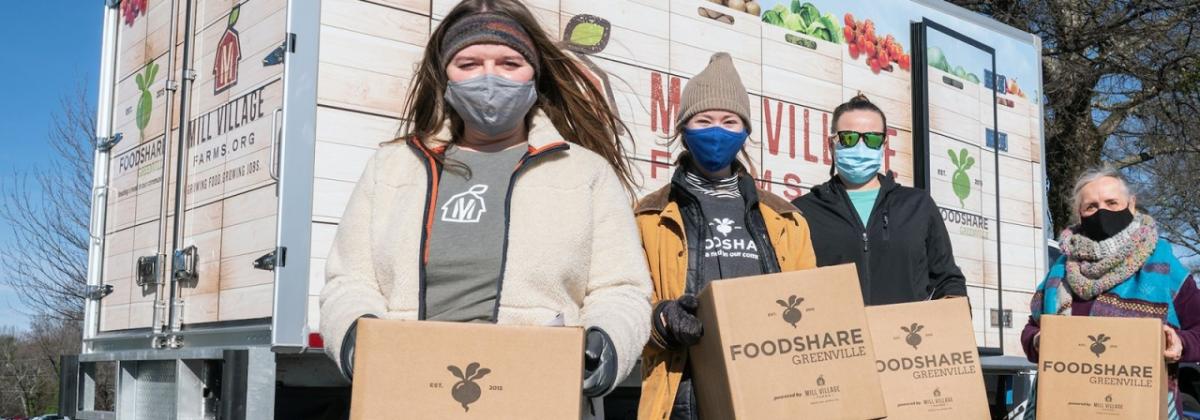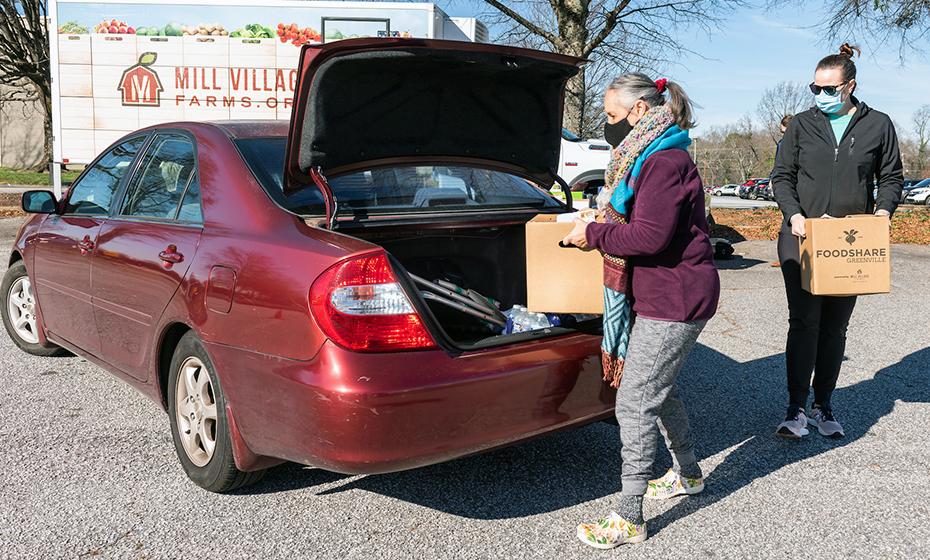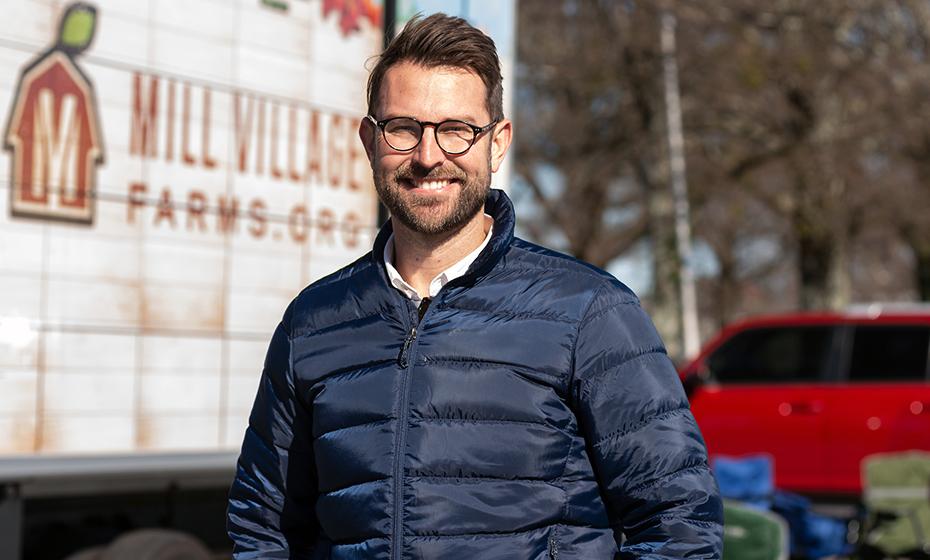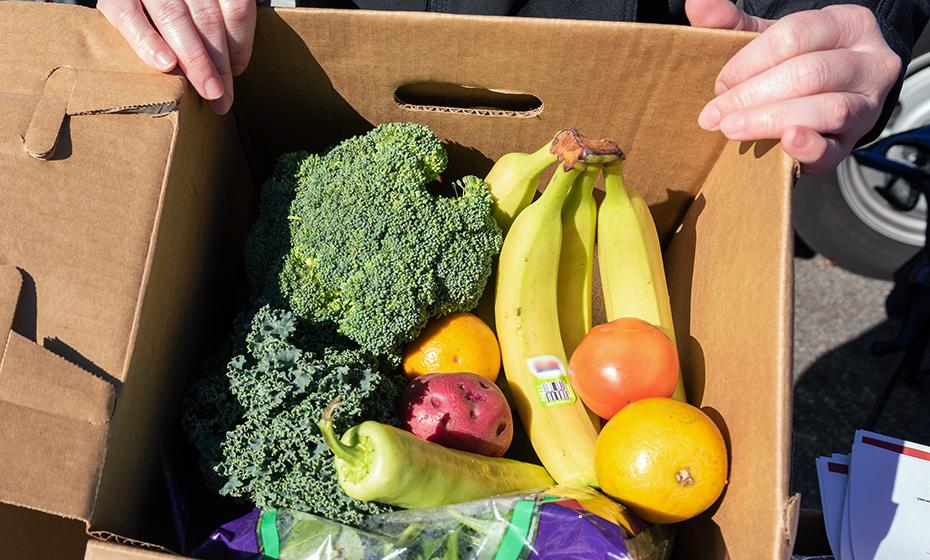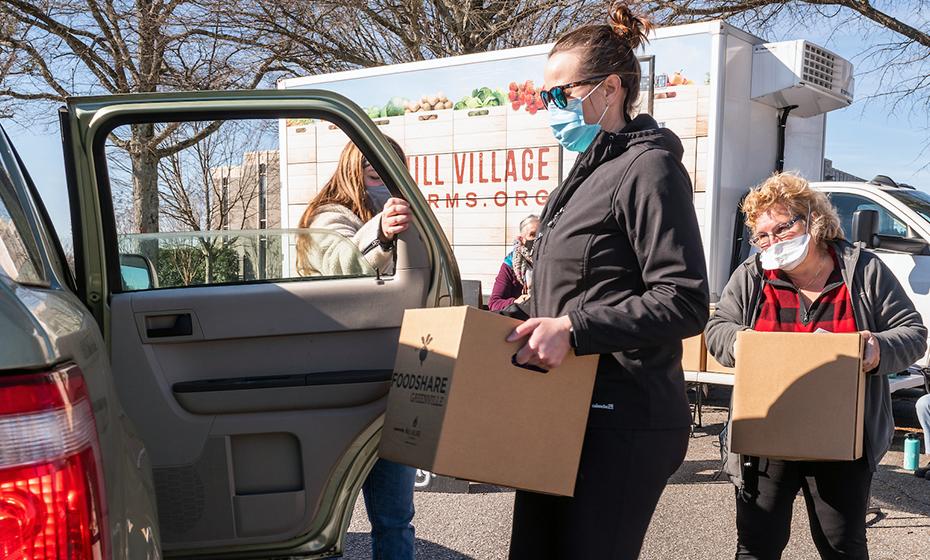One Way to Solve Food Insecurity: Healthy Food Distribution Programs
How a Duke Energy initiative in South Carolina supports fresh food options
Originally published by Duke Energy
A salad with a rainbow of fruits and vegetables. Celery boats with radish, cream cheese, smoked paprika and chili lime spice. Spiced pear dessert burritos. Those are just some of Catherine Sadler’s creative dishes from the past months.
“I never, or rarely ever,” she said, “make the same thing twice.”
“Healthy food is some of the most difficult food to be able to secure because of the cost and the convenience factor,” said Dan Weidenbenner, executive director of Mill Village Farms, who pointed out that healthier food is usually farthest from low-income neighborhoods.Her experiments in her Greenville, S.C., kitchen didn’t include this variety of fresh produce before she started using Supplemental Nutrition Assistance Program (SNAP) benefits to receive produce boxes from Mill Village Farms’ FoodShare Greenville program.
The problem these communities face: food insecurity. The U.S. Department of Agriculture says food insecurity is a lack of consistent access to enough food for an active, healthy life as a result of limited financial resources. In 2020, as many as 38 million Americans were identified as food insecure.
“Greenville and South Carolina are not unique,” Weidenbenner said. “It’s across the country, the way that our food system is set up, that has created this problem.”
A growing response to food insecurity
At the onset of the pandemic, in addition to offering utility assistance, the foundation made a decision to start incorporating food insecurity in its philanthropy.To combat the problem in South Carolina, the Duke Energy Foundation launched a monthlong campaign in November 2021 by committing $250,000 for a variety of feeding programs. It granted $50,000 to Mill Village Farms for Weidenbenner and his team to distribute to other FoodShareSC programs, to assist with similar food box distributions.
“We were hearing from hunger-focused nonprofits that they were seeing double and triple the normal need for services,” said Amanda Dow, stakeholder manager for the Duke Energy Foundation in South Carolina. “That’s what started our relationships with the feeding programs in our communities. We have continued to check in with them, trying to use them as a gauge for what the needs of individuals are during the pandemic.”
In addition to the FoodShare funding, the monthlong campaign included nearly $150,000 in surprise microgrants to organizations that address food insecurities and inequities, and $50,000 to Harvest Hope Food Bank for mobile food pantries that serve rural areas in the upstate and Pee Dee regions.
Previously, Duke Energy pledged $1.3 million to health and human services and hunger relief efforts across its seven service states as a response to COVID-19. That included a commitment in Florida to provide funding to Second Harvest Food Bank and Seniors First Meals on Wheels. In Indiana, Duke Energy donated to the Dare to Care food bank and Meals on Wheels.
Her doctor recommended she go vegan for better health. She signed up for FoodShare after learning about it through a diabetes management program. While the veganism didn’t work out, her higher consumption of fresh produce did.The pandemic dried up Sadler’s finances. She got sick with COVID-19 before the country shut down, and she faced unemployment for more than a year and a half. At 61, she struggled to return to the workforce with her background in administrative assistance and office management.
“FoodShare made it so easy,” said Sadler, who now has temporary production line work. “Every other week I get a box of fruits and vegetables.”
Which means access to a variety of colorful, fresh ingredients for $5, a discounted rate she wouldn’t be able to find at a supermarket.
The best aspect of the boxes?
“It’s the surprise,” said Sadler, whose co-workers are always curious to see what she brings for lunch. “I like to experiment with food and flavors. It makes it so much fun to never know what I’m getting.”
Providing access to farm-fresh foods
Mill Village Farms is a nonprofit that grows food on vacant properties to supply produce to those who are struggling financially, including communities with limited access to farm-fresh foods. The organization provides produce at farmers markets, as well as through FoodShare Greenville, which supplies discounted boxes filled with a diversity of produce at different agency sites.
Sadler said no matter who you are or what age you are, as long as you enjoy experimenting in the kitchen and getting lower-priced produce, Mill Village Farms’ FoodShare program is the way to go.The aim is to make these boxes affordable and easy to pick up for people who may not have access to fresh food and are instead relying on fast food and dollar store options. The boxes also contain recipe cards in English and Spanish so customers are inspired to cook with produce they might not have encountered before, whether that’s a kiwi or spaghetti squash.
While there is federal programming in place, aid doesn’t consistently trickle down to nonprofits like Mill Village Farms. For example, SNAP gives temporary benefits to low-income families to buy groceries. With the help of limited state funds, Mill Village Farms gets a reimbursement when families use SNAP benefits to buy their produce, but it doesn’t cover the full cost.
That means financial contributions are necessary to support the growing infrastructure of nonprofits that combat food insecurity and to support the overwhelming number of Americans like Sadler who need help buying affordable, fresh food.
“This is still an issue in our communities,” Dow said, “and you can help, too.”

